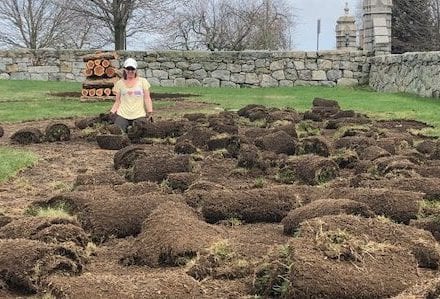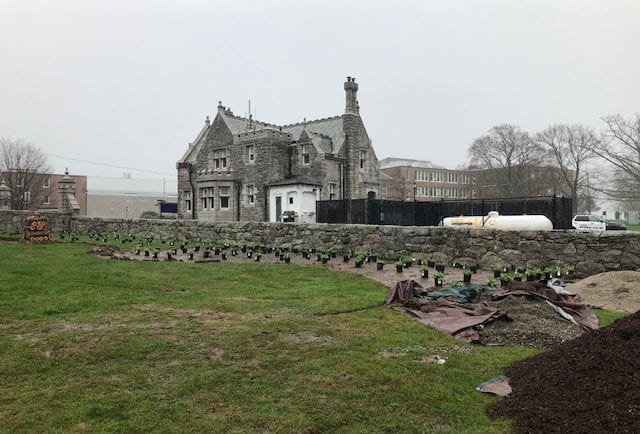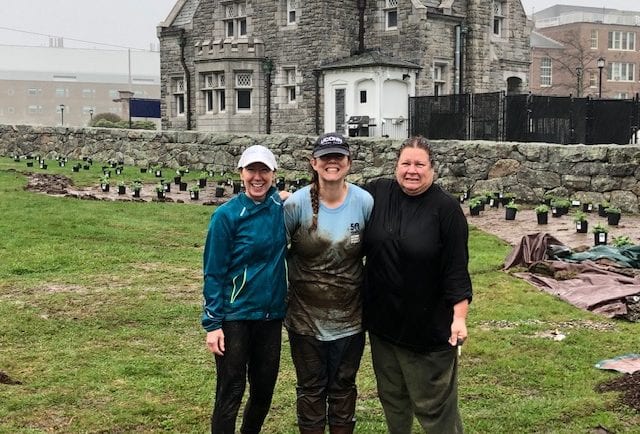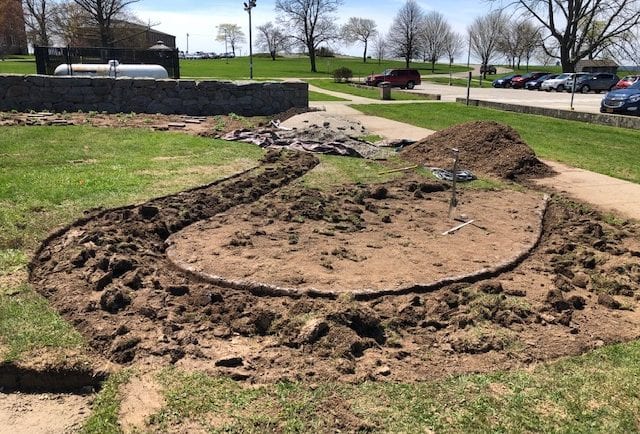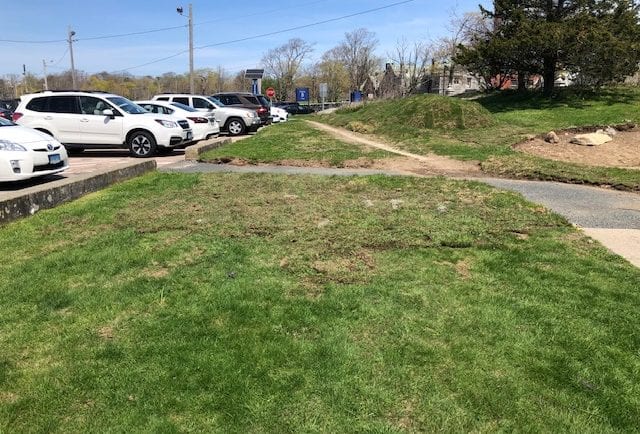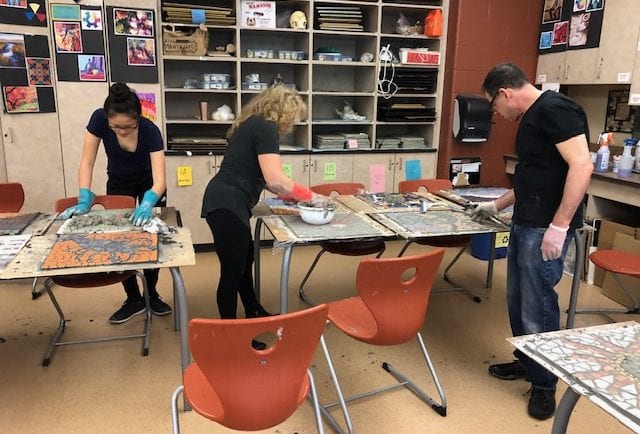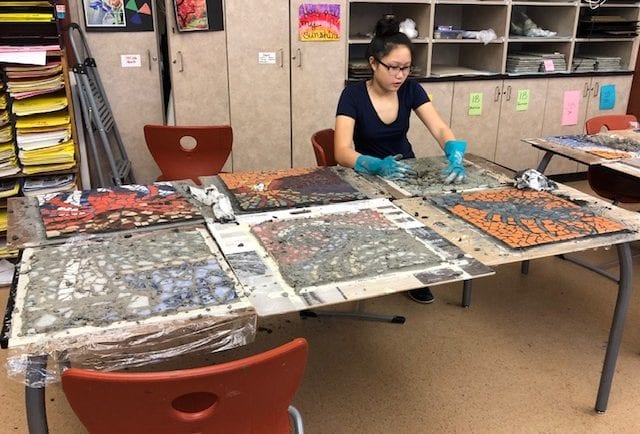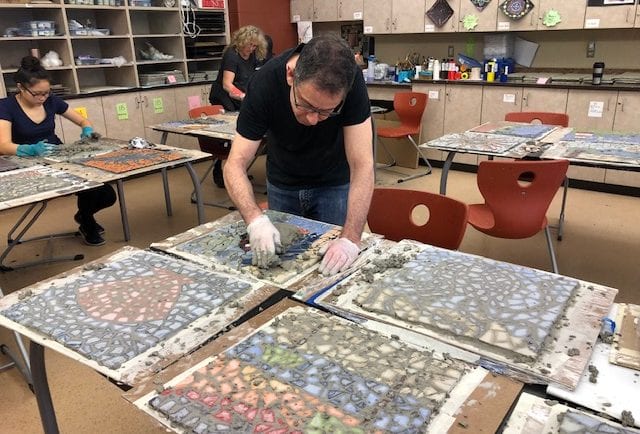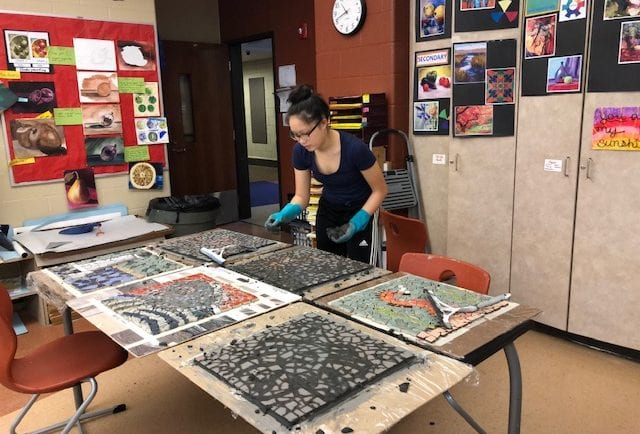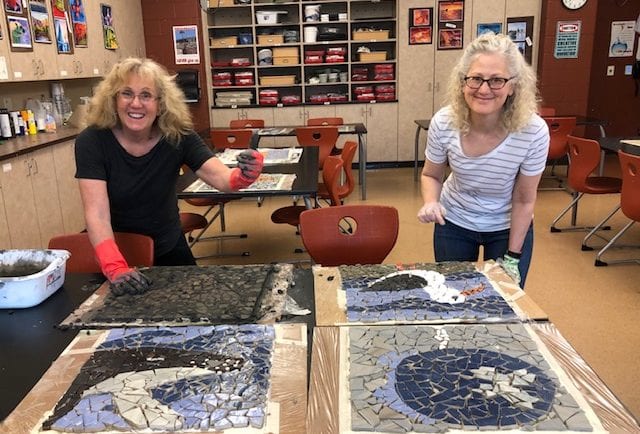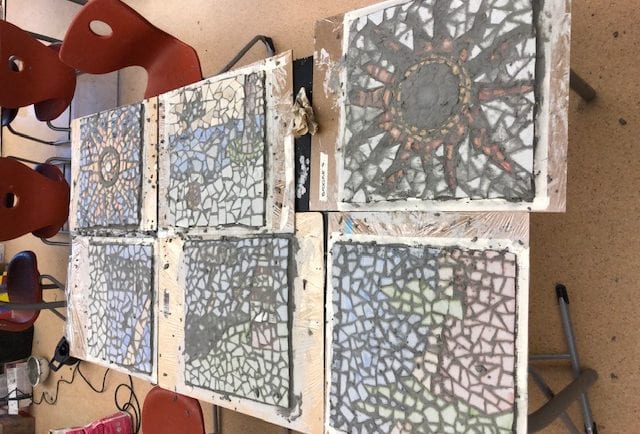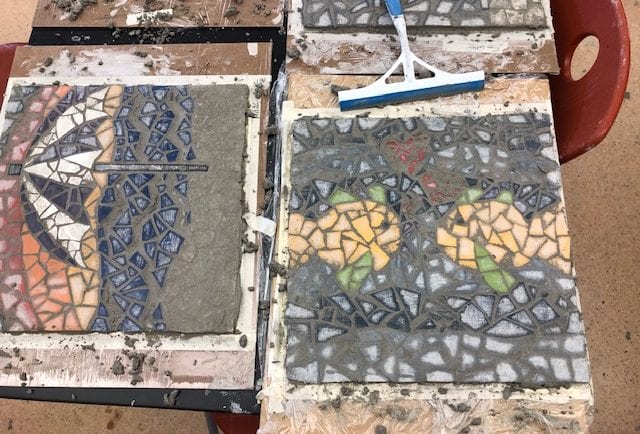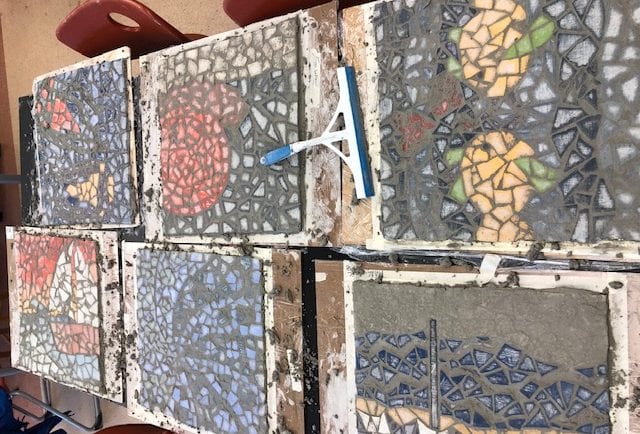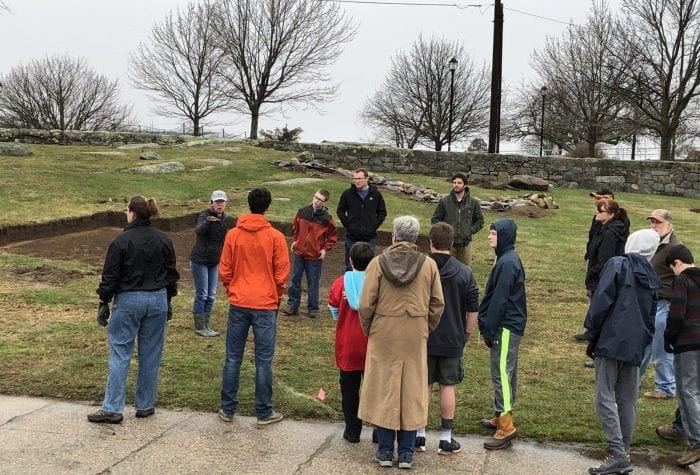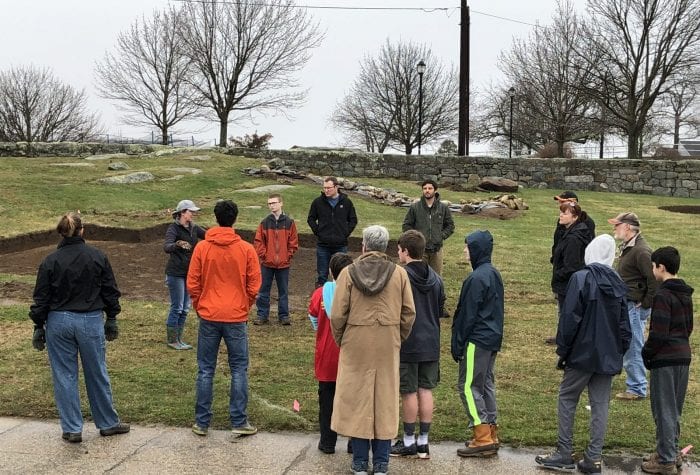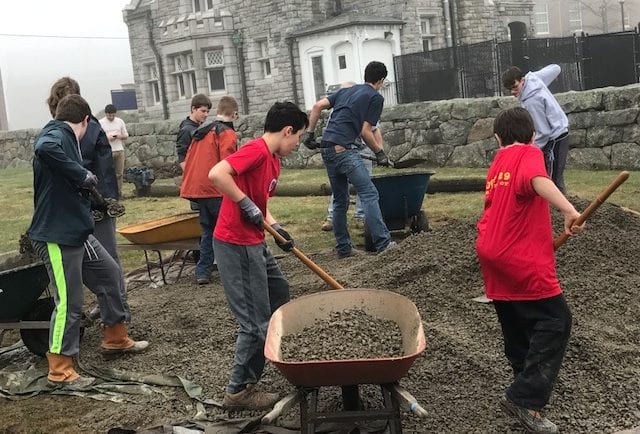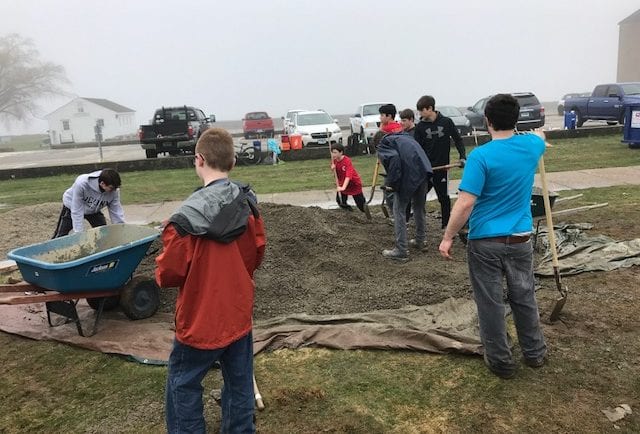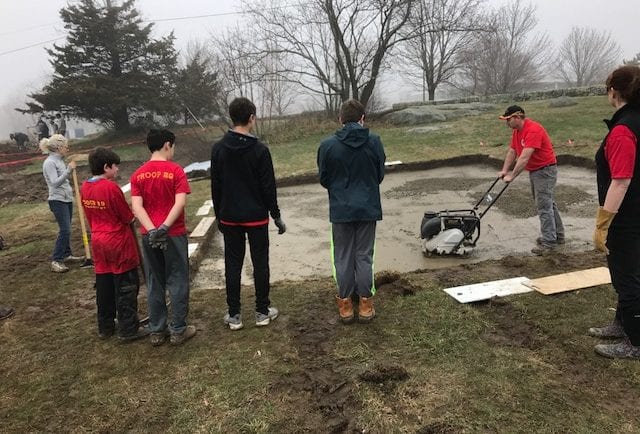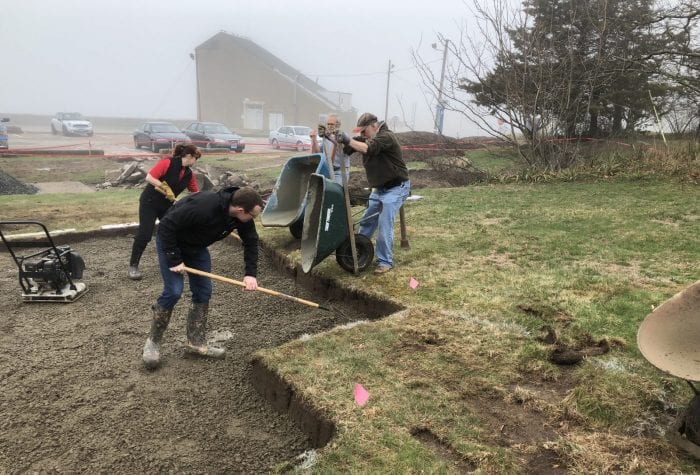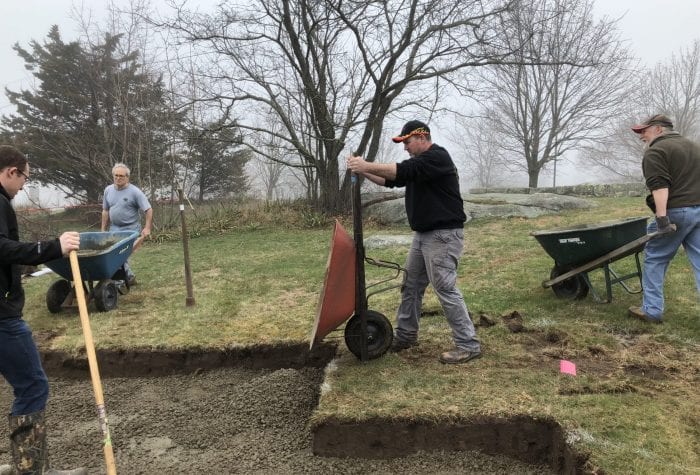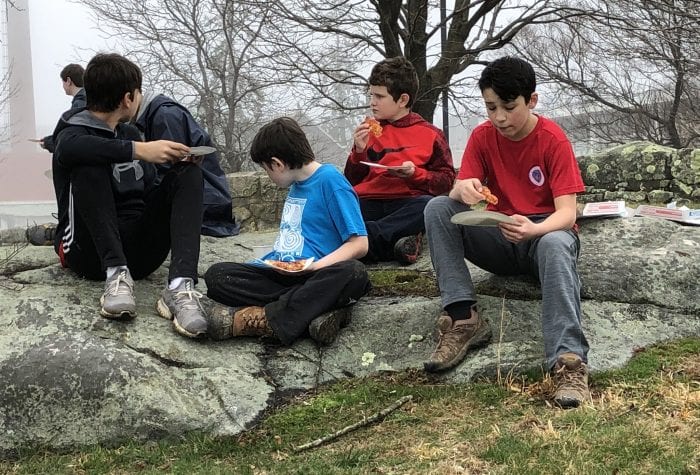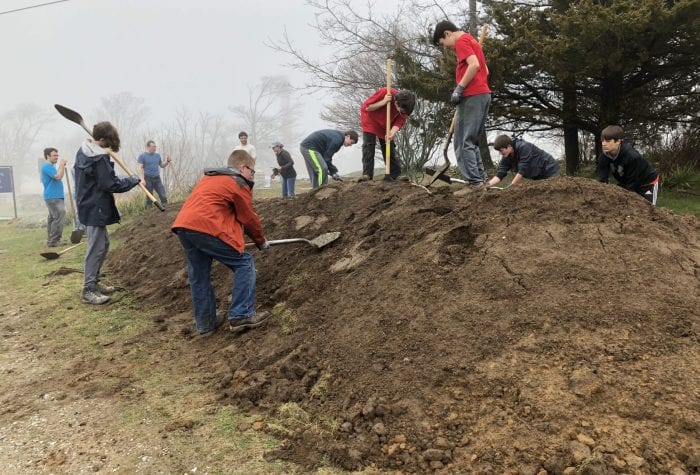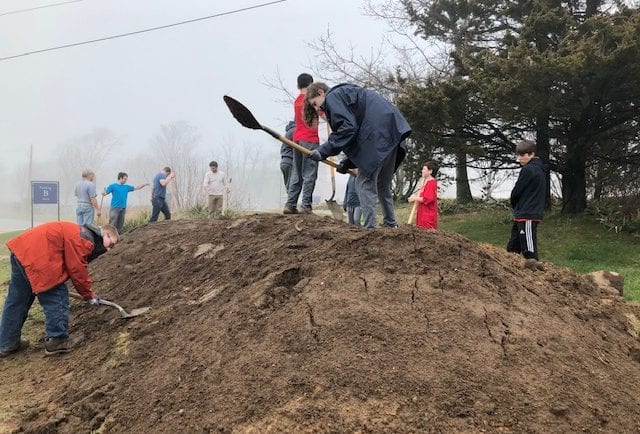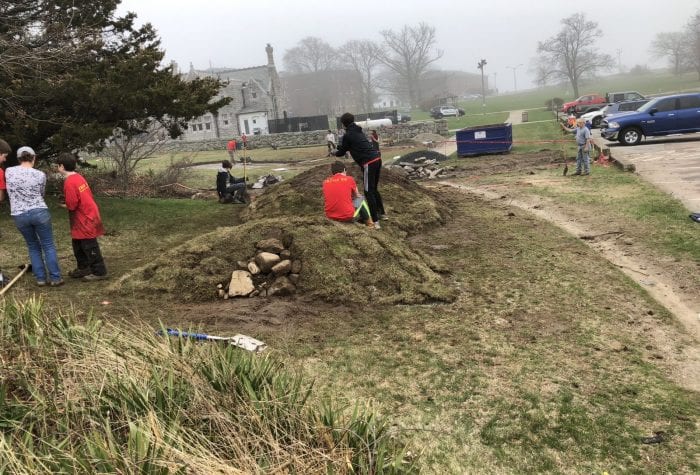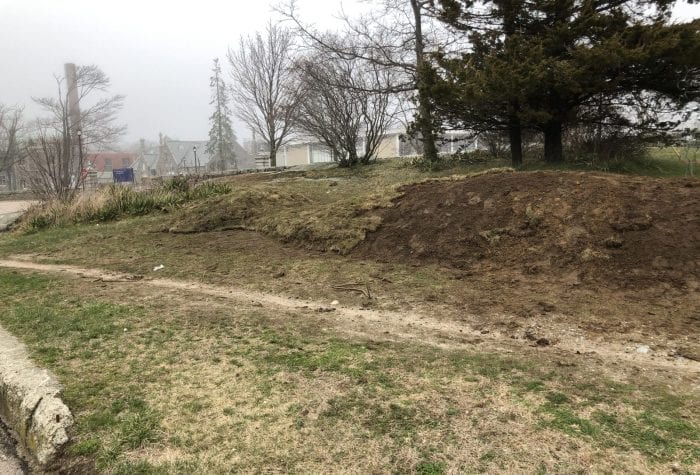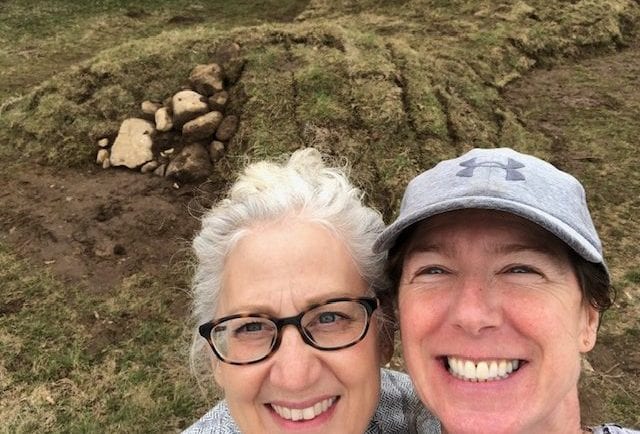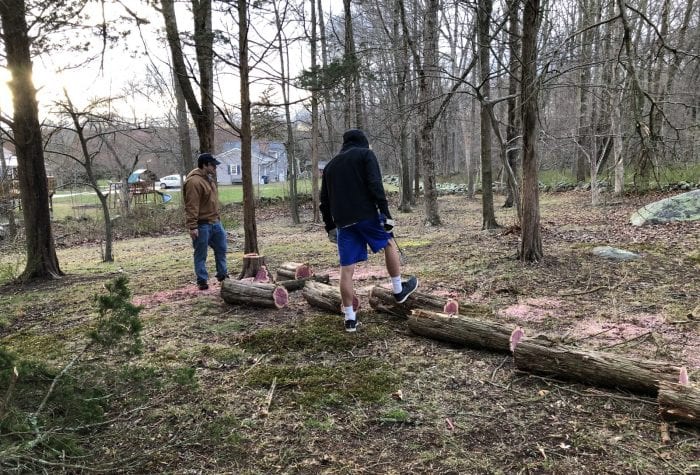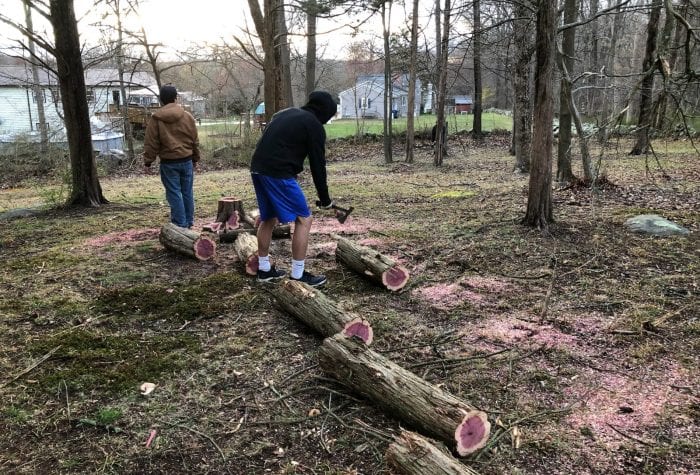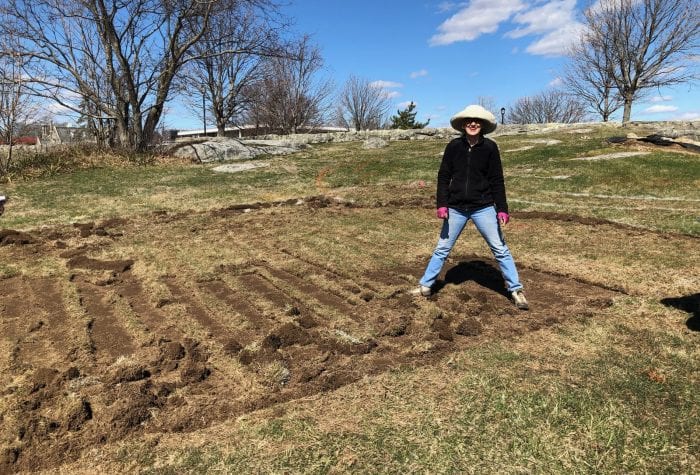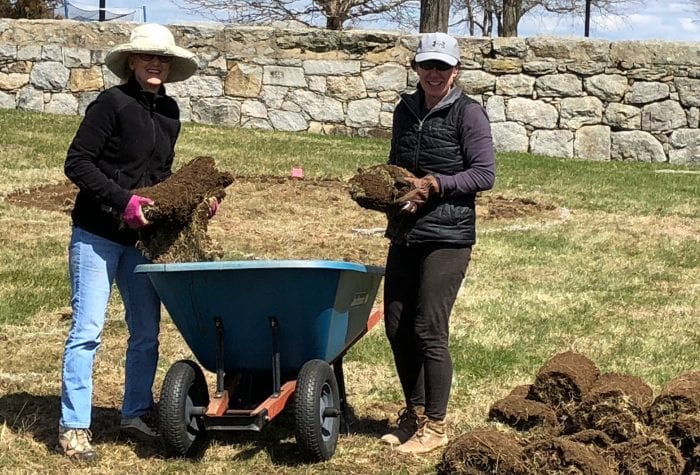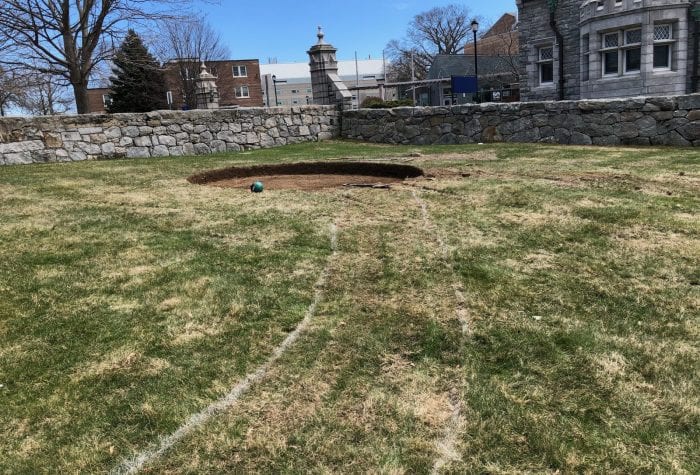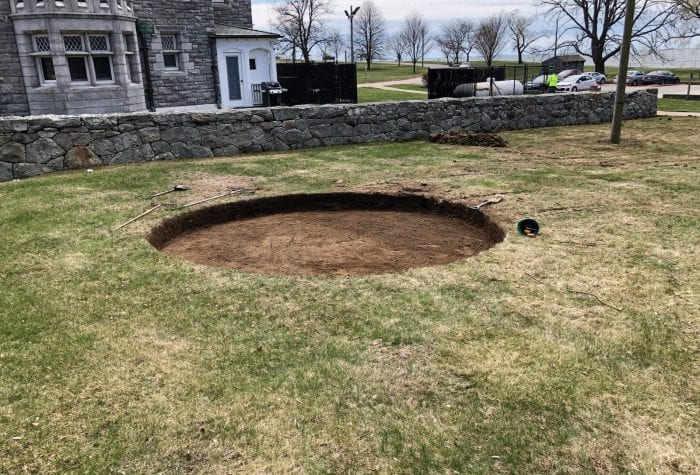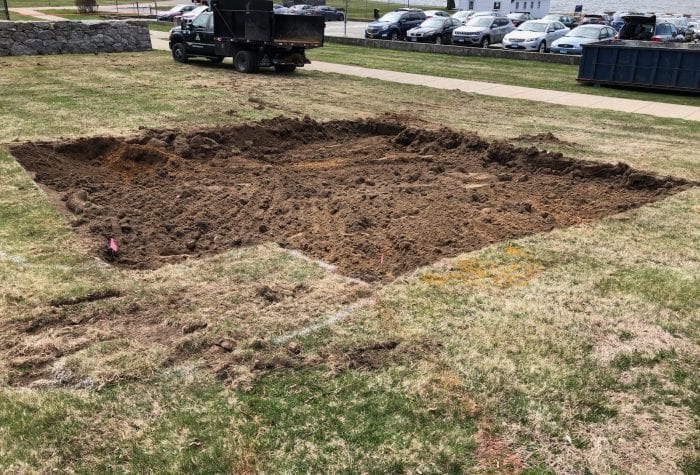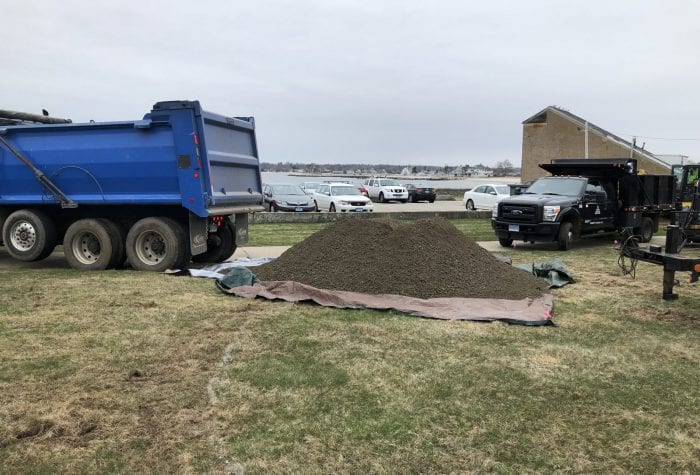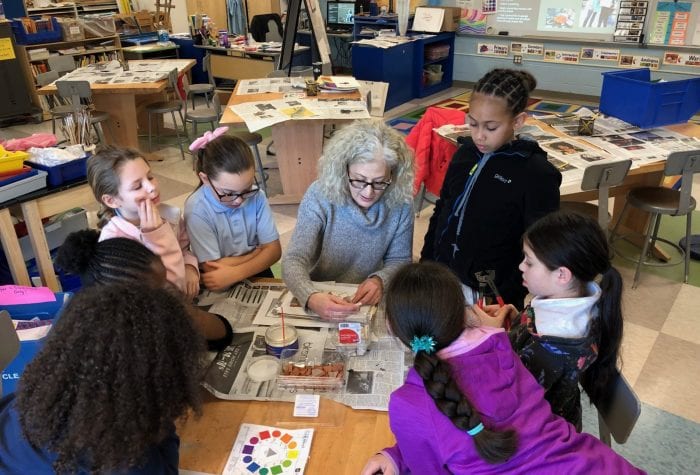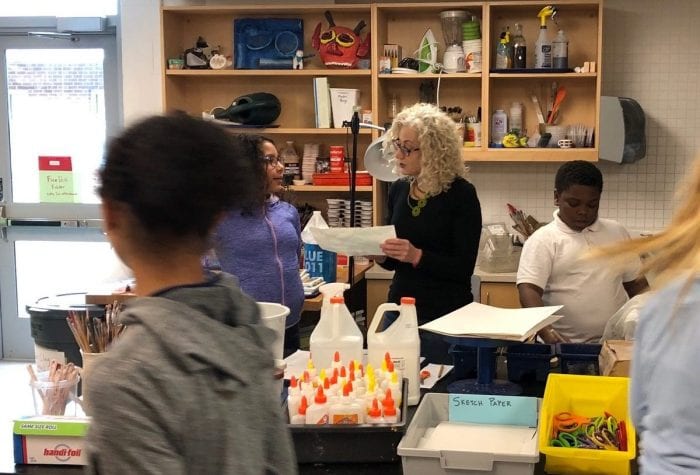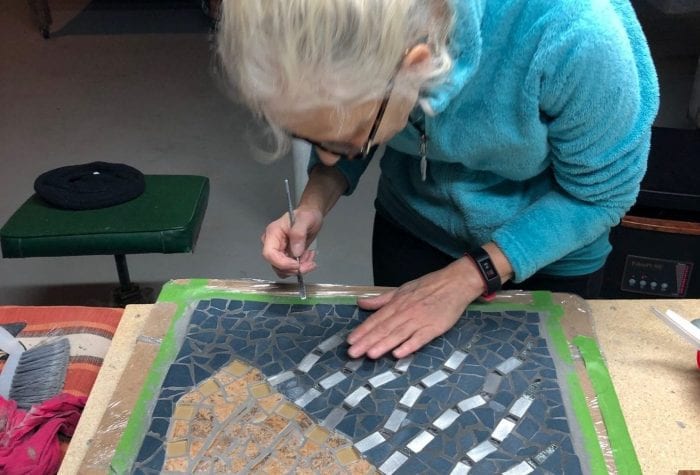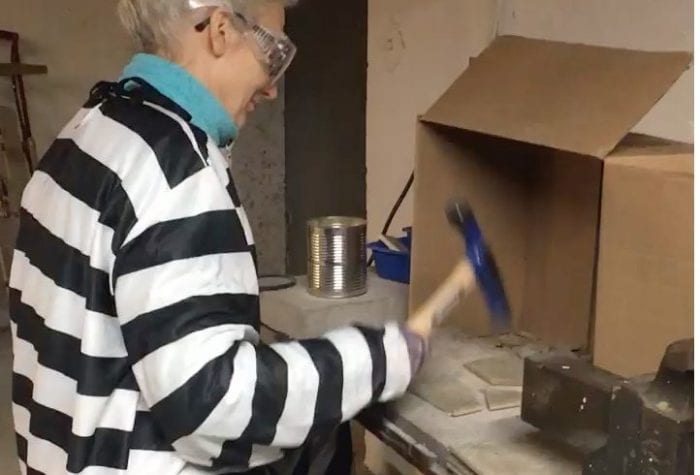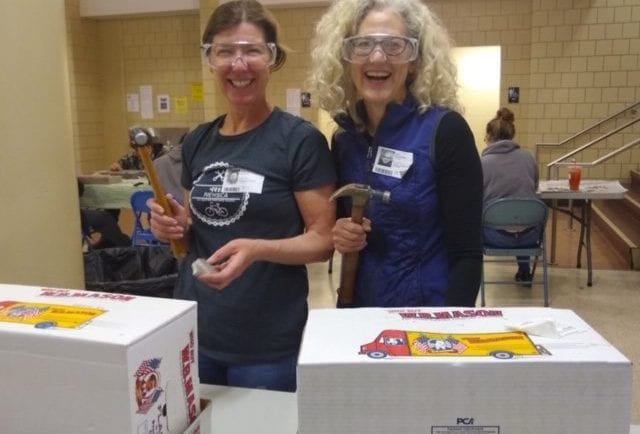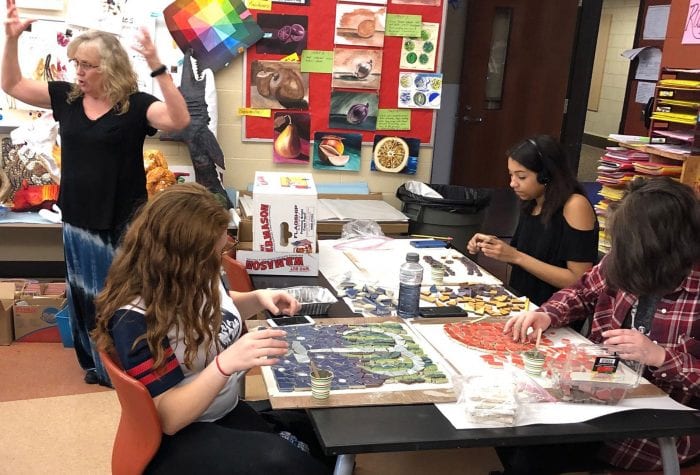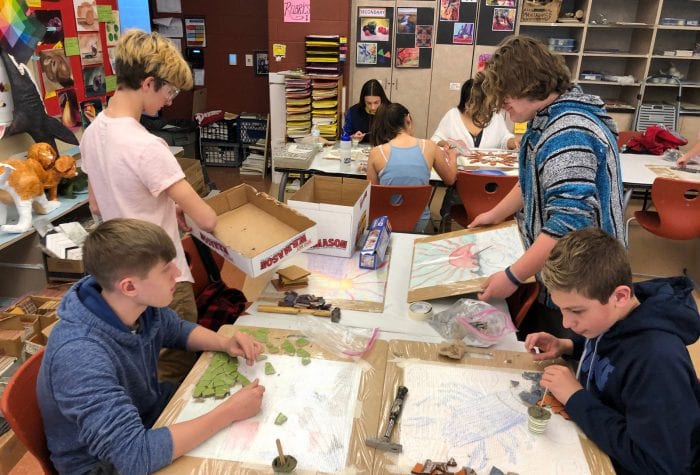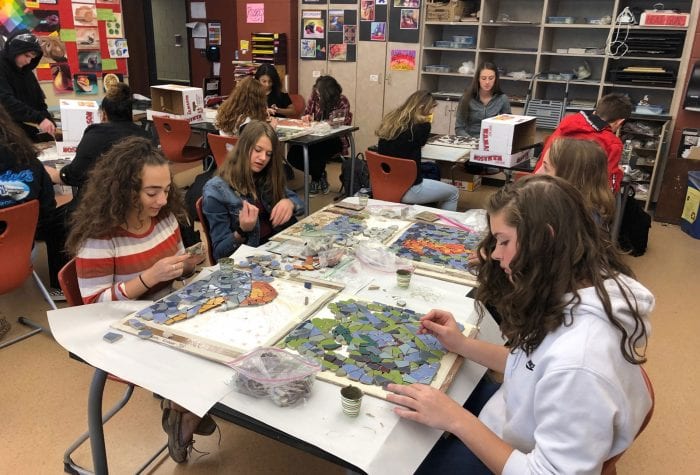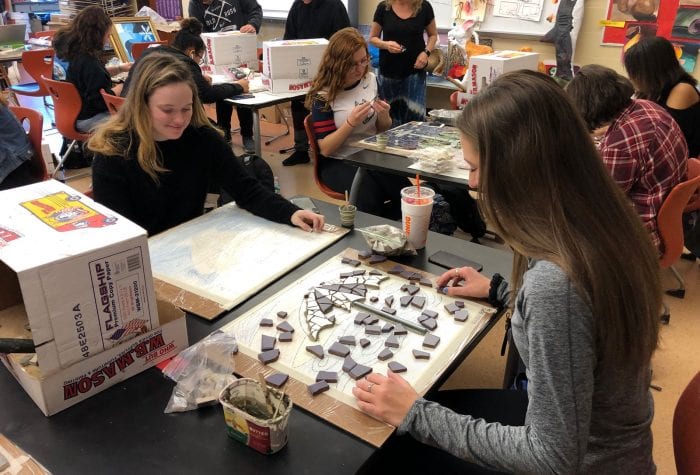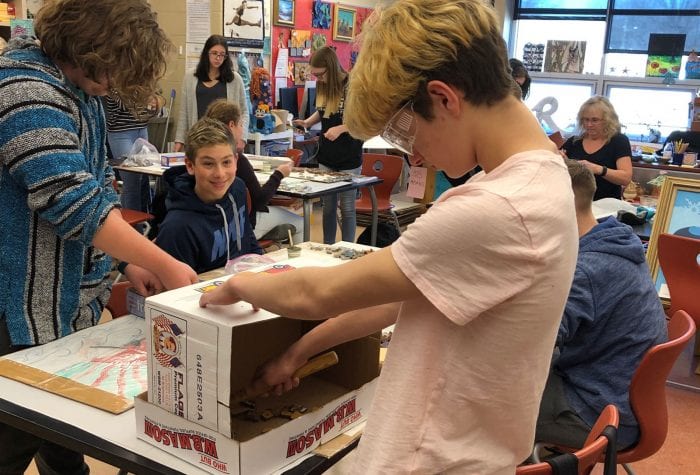I rolled up sod yesterday morning and began laying it over a large patch of dirt that had been grass before the heavy machinery and big dumpsters sat on it leaving it a muddy mess. The day was cold and overcast. I was preparing to create the entrance path. We had marked it out weeks ago and Burnett’s Landscaping of Salem had cut the sod, but we had left it in place for erosion control, knowing April showers would soon arrive.
In this space was sod that I had rolled up a couple of weeks ago, now a yellow-green with chlorosis (sorry grass!). Then there was the sod that I was rolling up that morning which had to be removed with a pitchfork. So much time had passed since it’d been cut, the roots were growing back into the soil. Some of those pieces rolled up with some coaxing but others had to be ripped out of the ground, coming out in different shapes and sizes. I had used spray paint to mark the pathways and, when I sliced through the grass, some sod pieces wore the white paint marks.
As I moved the sod over to the muddy earth on the other side of the sidewalk I’d look for a piece that was a triangular shape, or wider at one end, to fit into a particular space. At some point, I realized that I was creating a mosaic of sod, a jigsaw puzzle of different colored/shaped pieces and some with the white paint which stood out against the green. I was delighted!
The sod mosaic made me consider the garden as a whole, with each contribution to the garden—the waterfall, the sandpit, the pollinator and meadow plants, etc.—creating a mosaic of sorts. The labyrinth, with its 119 artful mosaic pavers and the amphitheater with its mosaic pavers and color wheel are literally small mosaics within a larger mosaic, within the garden which is itself a mosaic. Each bench, each piece of art, everything that goes into a garden helps to connect the separate parts. Together they give the garden structure, beauty, and meaning.
This past week has seen more community members donating time and materials. Cash True Value in East Lyme donated all the hoses, sprayers, and automatic timers to help the garden get established. My mentors, Petie Reed and Rich Oliver from Perennial Harmony in East Lyme, came out in the bitterly cold rain to help lay out 240 plants donated by Judge’s Farm of Old Lyme. My psychology mentor Dr. Jamie Kleinman and I had already spent hours moving, what seemed like a sea of sod, out of the pollinator garden that day in preparation for the plants. Several UConn students also helped move sod and dirt over the past two weeks—a big shout out to Zhao and Isabel who made our lives that much easier as a result of their volunteerism! The community is also a mosaic—people of all different ages, backgrounds, nationalities—and all of us are filling the garden with a piece of ourselves and our spirit of community. For all of these connections, I am thankful. And for the beautiful sod mosaic that I made with my hard labor, though it will (hopefully) even out to a single carpet of green, I am also grateful.
